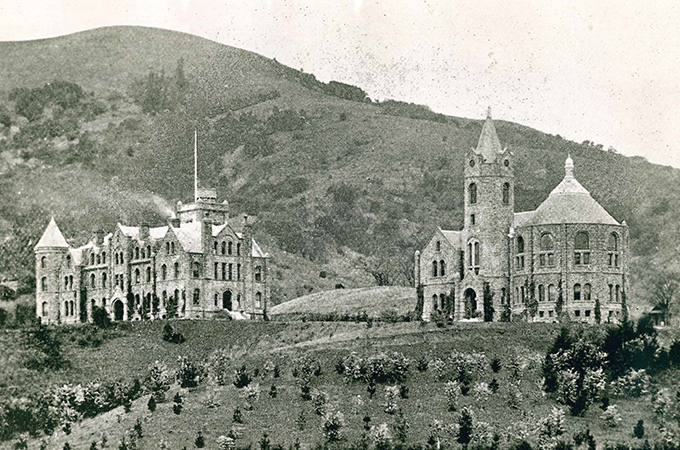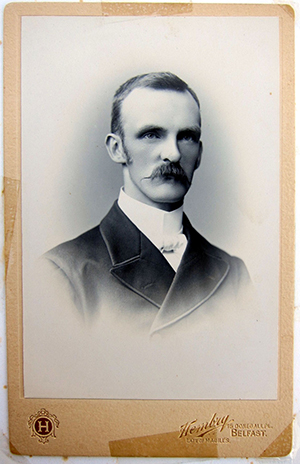
A Northern Ireland immigrant to the U.S., Rev. James Little, who graduated from San Francisco Theological Seminary (SFTS) in 1899, faced challenges and achieved triumphs much like those encountered by SFTS students in more recent decades. He lost loved ones, traveled a great distance to study in California, and searched for a church to call home. He also saw successes: He was a well-liked educator, and historical correspondence reflects the lives he touched with his dedication to both ministerial duties and education. Often living with meager funds, he was sustained by his faith and an unending quest for knowledge.
While the decades have seen so much change since the founding of the Seminary in 1871, ongoing forming, reforming, and transforming within the institution is a constant. Each era brings with it the unique currents of “modern times” influenced most significantly by the students and their quest for theological education.
“I entered seminary restless and unconvinced that parish ministry was where I was headed,” says Rev. Donald L. Smith ’77 (M.Div.), whose career has been devoted to refugee and immigration ministry. “What I knew for sure was that a seminary education was an energizing, life-giving option for me that I would regret for life if I passed up the chance of pursuing it.
“I remain convinced that God was at work in me at SFTS, preparing me for a journey uniquely my own.”
Forming a seminary on a hill
One hundred and fifty years ago, the founders of SFTS petitioned the then Synod of the Pacific to produce a plan for “the organization of a Theological Seminary such as the present wants and future interests of this coast demand.” Soon thereafter, a small number of students, potential leaders for the church in the Western U.S., began meeting with three professors in space offered by San Francisco churches.
For the move to its own space in Marin County some 20 years later, Seminary Trustee Arthur W. Foster offered the San Anselmo hilltop site. Among other benefactions, pioneer financier and philanthropist Alexander Montgomery underwrote the erection of a library and classroom building (Scott Hall) and a dormitory for students (Montgomery Hall)1.
As the authors of San Francisco Theological Seminary: The Shaping of a Western School of the Church, 1871-1998 wrote, “Ministers had to come from the East at great expense. More often than elsewhere in the church, they turned out to be unsuited to the congregations. It was better for churches to draw on a supply of ministers in the West where they could get to know them in advance. … The West, particularly California, was different, and for congregations in the West, it was best to have ministers raised in the West—‘a race of ministers brought up and trained here on the field.’ Such men would be less likely to become discouraged with the strangeness of the West.”
As it turns out, students came to SFTS from around the world. Yes, the Seminary’s population drew heavily from the West Coast, particularly from the Bay Area, but its reputation grew, and its outreach expanded.
Answering the demands of the day
From the start, there were intermittent struggles, including differences within the Presbyterian Church. There were hard times—earthquake damage closed buildings, and the Depression and Great Recession caused drastic budget reductions. There were boom times—aggressive fundraising campaigns led to great financial solvency in the 1940s; increased enrollment caused unprecedented expansion in the 1950s with new buildings and expanded programs; and burgeoning Master of Divinity interest was so great in the 1980s, there was talk of capping enrollment.
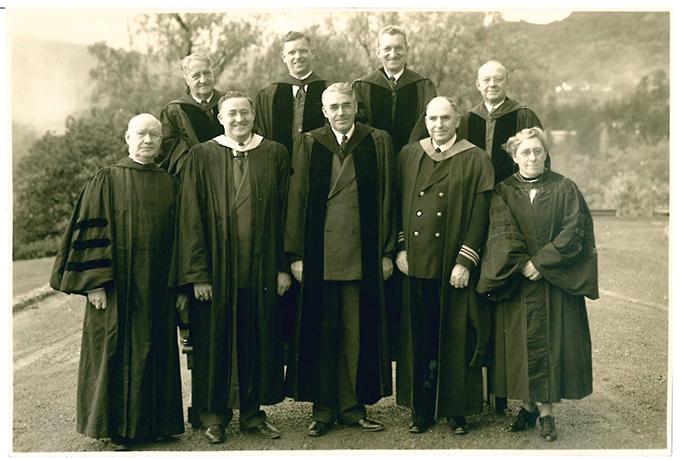
In 1911, women were admitted to SFTS, and the era’s feminism encouraged women to consider ministry. However, as feminism ebbed in the 1920s and the ordination of women to ministry failed to be adopted in the denomination, the number of female Bachelor of Divinity candidates declined at SFTS, and women turned to courses that became careers, such as missionaries or Christian educators. More than 20 years later, the first woman faculty member, Margaret Tappan, was hired and helped launch the Master of Arts degree in Christian education in 1937. A half century later, the renewed 1970s feminist movement would cause the female student population to grow by 45 percent in the early 1980s.
“I had never met an ordained Presbyterian clergywoman, and no one had mentioned to me that ordination to the ministry became open to women [in the Presbyterian Church] in 1956,” says former Southern California Dean of Students Rev. Dr. Bear Ride ’78 (M.Div.), ’91 (D.Min.). “So I was delighted to discover my first day at SFTS that nearly half of the entering class were women, and that many had the ambition to become ordained ministers. That immediately became my goal as well.”
The political, social, and economic upheavals of the 1960s, 1970s, and 1980s roiled the campus just as it did the rest of the world. Students and faculty debated and organized actions on civil rights, resistance to the war in Vietnam, sanctuary for Central American refugees, nuclear disarmament, and more. “I arrived a year after the Summer of Love. Martin Luther King Jr. was assassinated. Cesar Chavez was leading boycotts. And, the pacifist Berrigan Brothers spoke on campus,” says Thomas Rickert ’69 (Th.M.), founder and executive director of Access Exchange International. “The campus was filled with students, and many were there to avoid the draft, but a great many of those were strongly, avidly involved in the social issues of the day. The faculty was supportive, and they were also providing an intellectual basis for these efforts.
“A very fervent, almost revolutionary feeling was in the air.”
Also during the 1970s, organizations supporting gays and lesbians and their families were well-supported at SFTS in response to the UPC (USA) resolution to deny ordination to this community. While SFTS enjoyed a reputation for leading the charge for equality, the present-day Presbyterian Church (USA) did not allow openly gay people in same-sex relationships to be ordained until 2011.
“I had one preaching professor who opened our class letting us know that he was not in support of the Presbyterian Church affirming the ordination and full inclusion of LGBT people. Everyone in class looked at me, so I knew I was ordained to respond,” says Rev. Dr. Yvette Flunder ’97 (D.Min.), founder and senior pastor of City of Refuge United Church of Christ in Oakland and the presiding bishop of the Fellowship of Affirming Ministries (TFAM), a national coalition of congregations and faith- and justice-based organizations throughout the U.S., Africa, Asia, Mexico, and the United Kingdom. “I asked, ‘What does that have to do with what you are here to teach us?’ He replied that he wanted to let us know where he stood.
“I realized then I had to come up with a clear, cogent theology of radical inclusivity, extravagant grace, and relentless hospitality, which in some ways is very anti-church.” This theology took its initial form in the book she authored, Where the Edge Gathers: Building a Community of Radical Inclusion, and continually evolves through the TFAM movement.
The Seminary has since cultivated a reputation as one of the most LGBTQ-friendly environments among the PCUSA seminaries, says Smith, who worked with the Synod of Southern California and Hawaii, PCUSA, and is now retired. “This is among the strongest selling points for SFTS today.”
While perhaps now very different than how the founders understood it, “SFTS is distinctly ‘West Coast,’” says Ride. “The atmosphere is fairly casual and extraordinarily kind and friendly, especially for a competitive graduate school. Justice issues have always mattered to SFTS faculty and students.”
Finding a home
Having served as an SFTS assistant professor of ministry in addition to being an alumnus, Rev. Calvin Chinn ’66 (M.Div.) was immersed in campus life. “My family loved living in what is today the Shaw House, which became known as the Chinn House during our 12 years in residence,” says Chinn, who is a retired member of the Presbytery of San Francisco and former pastor of churches in California and Oregon. “When we moved in, the house was filled with valuable antiques and was kept very dark with heavy curtains. We had it repainted in bright colors, let in as much light as possible, and filled it with lots of noise and activity. To this day, my family still considers it home.”
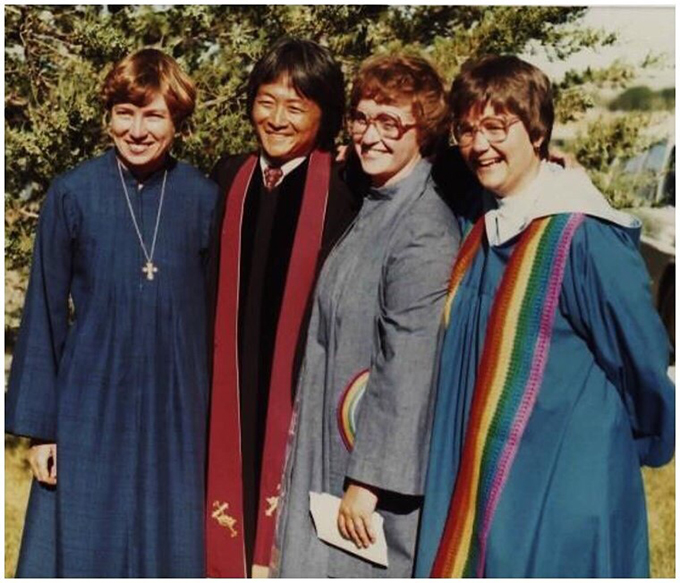
Examining the vitality of the campus in his student days in the 1960s, “SFTS was at the forefront of serving as a prophetic voice, addressing the challenges of the day—racism, civil rights, the Vietnam War, and homophobia,” says Chinn. He also describes a personal pivotal experience that serves as a touchstone for so many: “The historic call came from Dr. Martin Luther King Jr.’s office for a group of seminarians to participate in the Selma March. As one of the seminarians on that march, the event transformed my call to serve the poor and the marginalized.”
Back in 1945, the first Black student graduated from SFTS. “An examination of its annals would reveal the fact that SFTS has been and remains a predominantly white institution. That is reflective of its history in the Presbyterian Church (USA),” says Rev. Mark S. Jones Sr. ’12 (M.Div.), pastor for mission and outreach and pastoral care at Westwood Presbyterian Church in Los Angeles and National Black Presbyterian Caucus West Region representative. “That, I believe, is important because, despite the Seminary’s uninterrupted white dominance, it has equipped a significant number of racial ethnic graduates from all of its various degree programs. They have made incredible contributions to the church of Jesus Christ and to society. That is to its undeniable credit.”
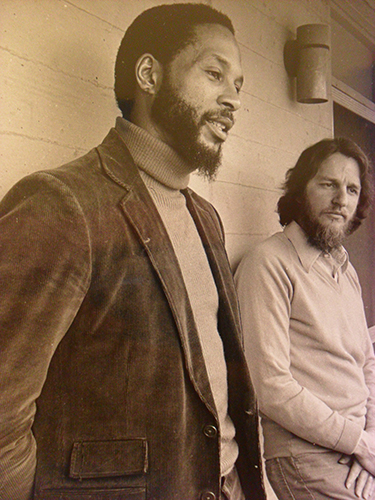
Rev. Roland Gordon ’83 (M.Div.), pastor of Ingleside Presbyterian Church in San Francisco and president of the Northern California Chapter of the Black Presbyterian Caucus , was among the students, alumni, faculty, and staff who helped raise the funds to establish the H. Eugene Farlough Jr. Chair of African American Christianity in 2003. “It was important that the Black perspective be in the curriculum. Black alumni felt strongly that we could help save the soul of our seminary, as well as enhance the growth of all students, with an endowed Black professorship,” says Gordon, whose affection for SFTS is palpable. “I was given financial aid, which enabled me to attend SFTS. I fell in love with the old buildings—the natural scene was so beautiful. The professors worked with me knowing I was concurrently serving an inner-city church as a student pastor. God certainly called and made a way for me.”
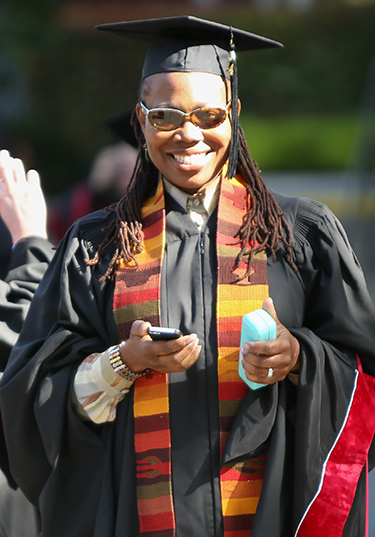
The Rev. Dr. James Noel ’75 (M.Div.), ’99 (Ph.D., GTU), who was recruited to the staff as director of continuing education and later became professor of church history while earning a Ph.D. at the Graduate Theological Union, was the first occupant of the Farlough chair. Rev. Dr. Farlough ’65 (B.D.), ’75 (D.Min.) was the founding pastor of Sojourner Truth Presbyterian Church in Richmond, California, and his passion was enriching the curriculum and community life of SFTS and the Graduate Theological Union by increasing the number of Black faculty and students.
While studying for her Master of Divinity degree at SFTS, Rev. Ineda P. Adesanya ’13 (D.A.S.D.), ’14 (M.Div.), ’15 (M.A., GTU) was the founding president of the Students of the African Diaspora (StAD) association, offering cultural and social activities for all students of African descent who were enrolled in the Seminary’s certificate, diploma, or degree programs. “It is a space of welcome, comfort, support, and advocacy for students,” says Adesanya, who is associate minister of spiritual life at the Allen Temple Baptist Church in Oakland and president and CEO of The Chaplaincy Institute in Berkeley, California. Today, StAD endures as part of student life within the University of Redlands Graduate School of Theology.
Evolving educational opportunities
In the vanguard of faith-affirming, world-engaging, and multi-disciplinary theological studies, SFTS has never ceased in transforming its programs to meet the needs of contemporary students.
In 1981, the Seminary took a lead in the field of spiritual formation studies when Professor Roy Fairchild worked with Morton Kelsey, an Episcopal priest nationally known for promoting among American Protestants the cultivation of spiritual practices of the Catholic and Orthodox churches in Eastern religions, to establish the Center for Christian Spiritual Disciplines. Many students have been introduced to the idea of going to seminary by participating in one of its Companions of the Inner Way retreats. Under the leadership of Elizabeth Liebert, Ph.D. (Sisters of the Holy Names of Jesus and Mary), appointed in 1987 as professor of spiritual life, the spirituality program was expanded to offer the Certificate/Diploma in the Art of Spiritual Direction, the Diploma in Spiritual Formation Studies, as well as a concentration in spirituality for Master of Divinity students.
Rev. Dr. Laurie Garrett-Cobbina was appointed to the faculty in 2006 and now directs the Shaw Chaplaincy Institute for Spiritual Care and Compassionate Leadership. As well as conducting a fully accredited program in clinical pastoral education, the institute nurtures the formation of spiritual care leaders and spiritually interested learners in many ways, fostering an understanding of how caring practices are expressed across cultures and religious traditions and contribute to multiple dimensions of interreligious thought, faith, life, and witness in the world.
Both of these programs, like the Master of Arts in Theological Studies (M.A.T.S.) and the one-time Master of Arts in Human Values programs, extend the opportunities for theological education and training in pastoral and spiritual care to lay people from all walks of life and religious persuasions.
“The program in Christian spirituality was the primary means through which I was able to respond to my divine call to pneumatology and ministry through the Spirit,” says Adesanya. “Entering seminary at midlife, the ability to grow and deepen my spirituality—my religious experience—through formation courses and retreats in prayer and meditation, spiritual direction, and other contemplative practices was transformative. It allowed space for my intellect and my heart to collide and fuel my scholarship and ministry of justice and love.”
Significantly, back in 1962, SFTS joined with other Bay Area theological schools in founding the Graduate Theological Union (GTU), a consortium of nine seminaries based in Berkeley. The interreligious GTU expanded master’s and doctoral degree opportunities for SFTS students.
“The GTU was a pioneer in the area of bringing together schools in a cooperative, educational setting—it was exciting,” says Judy Gritzmacher ’72 (M.A.), director of the Oratory Center for Spirituality in Rock Hill, South Carolina, who earned her degree through the GTU. “The schools, including SFTS, could keep their identity, yet benefit from the strengths and gifts of the other schools and traditions.”
For Gritzmacher, the experience led to a personal transformation: She started at the GTU as a member of the Presbyterian Church and left as a member of the Roman Catholic Church. “It was a step in my growth process and definitely led to decisions for the future, including two years of service in the Jesuit Volunteer Corps,” she says. “Through all of this, I feel the Spirit guided, formed, reformed, and transformed me.”
More recently, programs addressing contemporary issues also shaped students’ course of study: “I was drawn to the progressive nature of SFTS and its academics,” says Rev. Dr. Douglas Olds ’10 (M.Div.), ’20 (D.Min.), teaching elder in Redwoods Presbytery (PCUSA) and independent researcher in theology and eco-ecclesiology. “I joined the nascent Green Seminary Initiative during my first years at SFTS, which led to auditing the Seminary’s carbon emissions, the first such audit undertaken by a Presbyterian seminary.”
From near and far
SFTS has had a pronounced influence on Presbyterian leadership in the Bay Area, according to Chinn. “I was one of many who went into the ministry as a result of being nurtured by the ministries of Donaldina Cameron House and the Presbyterian Church of Chinatown,” he says. “Most of the 40-plus seminarians from Chinatown enrolled at SFTS, and so by the sheer numbers of us, we had an impact not only at the Seminary but also the PCUSA—our alumni served at every level of the denomination.”
Through extension programs in continuing education and nonresidential degree programs like the Master of Arts in Values, SFTS continued to seek ways to reach students beyond the Bay Area.
One of the largest initiatives was the establishment of the Southern California program, which from 1991 to 2012 offered courses leading to accredited degrees, primarily the Master of Divinity, in a nonresidential format. Southern California students studied evenings and weekends at various venues ranging from Santa Barbara to San Diego; instruction was provided by local SFTS faculty and adjuncts and by San Anselmo-based faculty who flew in for weekends or communicated by an early form of video-conferencing.
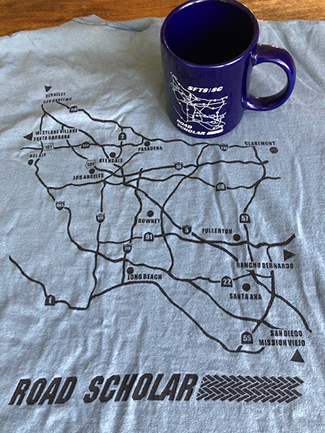
The southern program was affectionately dubbed “Road Scholar,” a witty reference to the region’s web of freeways. “The classes were in various venues, including seminary campuses and churches, with uninterrupted access to a quality theological library throughout my period of study,” says Jones. “There was no shortage of immersion into ecclesial and ecumenical experiences—denominational, domestic, and international.”
The program enabled a wide diversity of students, many of them already engaged church leaders, to deepen their theological education and qualify for ordination without uprooting themselves and their families to attend seminary in San Anselmo. It also expanded access to a master’s education for Korean speakers and Spanish speakers in Southern California, and under its auspices, a M.A.T.S. program, taught by SFTS faculty and local adjuncts, was offered in Korea with a short term residence in California.
The M.A.T.S. in Korea was modeled on the Doctor of Ministry program, which the Advanced Pastoral Studies (APS) department created under the direction of Professor of Continuing Education John S. Hadsell ’54 (B.D.); APS Director and Professor of the Sociology of Religion Walter T. Davis; and Warren Lee ’74 (D.Min.), subsequent APS director and professor of ministry in the Asian American context.
Pastors all over the world, from Egypt to New Zealand, met in collegium groups in their home country and attended intensive summer sessions in San Anselmo while working on a dissertation project in their own setting for ministry. The APS connection with churches in Australia and South Korea was especially strong. Beginning in the 1990s, an increasing number of students from Korea also entered the Master of Divinity and M.A.T.S. programs, north and south, so that the combination of Asian Americans and international students from Asia became the largest source of diversity in the student body.
“About 90 percent of the Korean doctoral students went back to South Korea, and they had earned Doctor of Ministry degrees,” says Lee, who is now retired. Their presence changed the complexion of the Seminary, he adds. “This was very different than when I started at the school when the incoming [Master of Divinity] class was about 50 students and mostly white.”
‘Expanding the ways to see God’s work in the world’
“During my first quarter of studies, I could have flunked out and been sent packing,” says Rev. Dr. Robert G. Stebe ’83 (M.Div.), ’15 (D.Min.), pastor of Hillsboro Presbyterian Church in Hillsboro, Oregon. “The personal attention and investment offered by faculty, administrators, and staff helped build my confidence and open me to the gifts and abilities given by the grace of God.”
And, lo, these many decades after Rev. Little traveled from Northern Ireland halfway around the world to a hill in San Anselmo, students continue to form, reform, and transform lives through spirit and service. “I like to use a quote from New Testament Professor Herman Waetjen: ‘If you never get out on a limb, you’ll never jump in,’” says Stebe. “SFTS pushes to advance the gospel and expand the ways to see God’s work in the world.”
Chinn underscores this sentiment: “When I was a student in the 1960s, it was no different than today. The world was in an uproar. Churches were challenged to be relevant and prophetic.
“Thanks to my education and biblical/theological formation at SFTS, I was given the tools to lead my congregations in trying times. This is the legacy of SFTS. And, it will continue providing the training for leaders in today’s world.”
Polly Coote, Ph.D., retired associate professor of biblical Greek, registrar, and associate dean of student life at SFTS, contributed to this story providing invaluable information and first-hand knowledge of the Seminary’s vibrant history.
This article first appeared in Chimes magazine. Stay tuned for Bulldog Blog coverage of the 150th anniversary celebration on the Marin campus Nov. 12-14, 2021.

